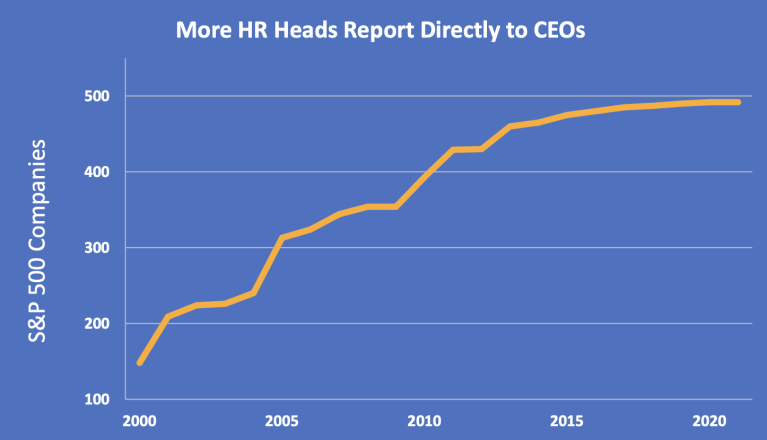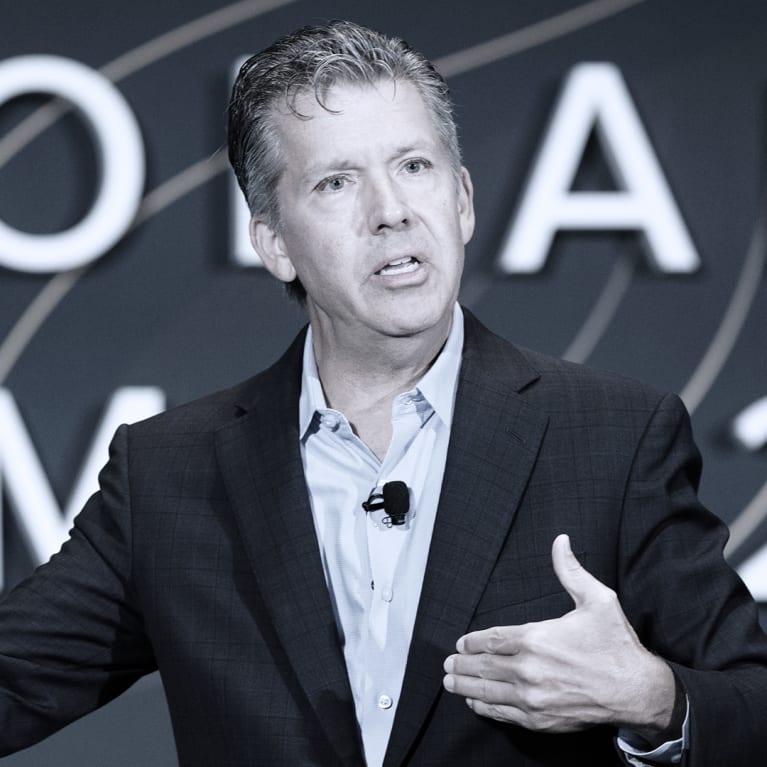HR Has Reached the Executive Mountaintop: How Long Will It Stay?

The long hand-wringing debate over whether HR has a seat at the executive table is over. The past two decades have seen a steady rise in HR's prominence and influence; and the profession's oversized role in responding to the pandemic helped place CHROs squarely at the right hand of America's CEOs.
But this leads to an important question: What comes next?
"Now that we've stepped up our game in terms of leadership of human capital all the way to the top, where do we go from there? Will our presence in the C-suite fade with time, as it has with other executive functions?" asked Rick Smith, a professor at Johns Hopkins University and director of the school's Human Capital Development Lab. Smith posed this question at the recent Visionaries Summit 2023, a gathering of SHRM Executive Network members in Washington, D.C.
Smith has conducted extensive research on human capital as a strategic resource, and he says the rapid rise of HR leaders to the C-suite has been without precedent in relation to other C-suite functions.
In the year 2000, only 30 percent of the companies listed in the S&P 500 had their head of human resources reporting directly to the CEO, Smith said. Today, that number has spiked to about 98 percent (see chart).
"That is a dramatic change in our profession. That is a dramatic testimony to how far we've come in what we do. … We've made this happen," Smith said. The main catalysts for HR's increasing prominence: the growing war for talent, the complexity of globalization, and increased regulation and legislation.
However, Smith's research indicates that, despite the ubiquitousness of CHROs, their function (and ultimately their value) remains murky to some—a fact that must change if HR is to retain their seat at the executive table.
The Ever-Evolving C-Suite
The progress of the CHRO role has been remarkable in its rapid ascent. And it comes at the same time that other C-suite positions are being diminished or even eliminated.
Consider the role of the chief operating officer. The COO position rose to popularity during the 1960s, Smith said, because the COO's oversight of internal operations helped complement the forward-thinking role of the CEO. For decades, the two formed a "dynamic duo" at the top of company leadership.
But after experiencing their heyday in the 1980s and '90s, Smith said, the COO's function slowly became incorporated into modern information systems. Individual business units gained more autonomy in their operations, making it unnecessary for many companies to have it as an executive function.
Chief marketing officers forged a similar path, originating in the 1960s and reaching their peak in the 1980s. Before marketing became streamlined and embedded into overall company operations, it was treated by most companies as a separate function. Today, less than 40 percent of CMOs report to the CEO.
These trends show that C-suite functions are far from static, Smith said, and CHROs current place at the executive table is far from certain.
The Ascent of HR
"HR has significantly evolved since its origins in personnel management," Smith noted. "Around the world, today we see the celebration of the coming of age of human resources, of human capital, of people management."
Rick Smith, professor at Johns Hopkins University and director of the school's Human Capital Development Lab
So what changed? "If we look back to the 'olden days' of two decades ago, it was ingrained in us that HR supported the 'life cycle of human resources,' " Smith said. "We do the attracting, the firing, the retiring and all the stuff in between—what we today call 'talent management.' " For a while, the role of HR didn't go beyond those functions.
"But then HR upped its game in terms of leadership of human capital all the way to the top," Smith added. HR began to move beyond attracting talent to formulate a human capital system that created new efficiencies and tied them directly to value. HR leaders also started to help CEOs understand that organizational culture is an essential tool for achieving results (both inside and outside of the company), and HR heads began creating behavioral models for their organizations to achieve their competitive strategies.
"Ultimately," Smith said, "we've taken charge of everyone who is managing people." HR executives became tasked with navigating a war for talent within a complex, globalized world with continually changing demands for human capital, and it made sense for them to do it from the C-suite.
3 Ways to Secure Your Strategic Seat at the Table
"HR has made great progress. But the question we need to ask ourselves is, 'Where do we go from here?' " Smith said. "Do we continue this strategic trajectory or will we fall like some of the other chiefs have over time?"
To remain important strategic advisors to their CEOs, CHROs must stay one step ahead of a wave of new workplace disruptions. These include adapting artificial intelligence, addressing the gig workforce, reskilling employees, addressing the ESG agenda, planning for succession, embracing wellness, acquiring in-demand talent and nailing the remote/hybrid work solution.
Among the steps CHROs will need to take to secure their seat at the table for years to come:
Demonstrate—and quantify—your value. Smith's research indicates that many CEOs are still unsure of the strategic value that their CHROs bring to the table. One study by Johns Hopkins' Human Capital Development Lab found that just a slim majority of CEOs (55 percent) agreed that their CHRO is a key player in company strategy. Two other worrying stats:
- Only 48 percent of CEOs agree that their CHRO has strategic business skills.
- And only about a third (36 percent) of CEOs say that the CHRO role in their company is clearly understood by the company's leadership.
The solution to ensuring the longevity of CHROs, Smith said, is to be proactive with your strategic insights and keep your contributions top of mind for your CEO.
Grow CHROs internally. "We need to ask ourselves, 'How do we fix this?' " Smith said. "How do we ensure that CEOs are not just filling a role, but that they understand that role?"
Part of the answer, he said, lies in growing CHROs internally so they have the knowledge needed about the company when they are ready to step into an executive role. However, CHROs are far more likely than other C-suite jobs to be hired directly into the role from the outside.
Smith's research discovered that only 32 percent of CHROs land at that top spot by being promoted from within. That's much lower than the CEO and CFO position, where nearly two-thirds are hired from inside the company (see chart).
"People may ask," he added, "Isn't it ironic that we are in charge of people development, but we're not taking care of our own folks?"
Build your company-specific knowledge. Smith said it's essential for CHROs to truly understand the inner workings of their organizations and know where they can make themselves indispensable.
"The bottom line for CHROs," Smith concluded, "is this: Have we demonstrated our value? This is why previous C-suite roles have lost their influence. It's not always clear to executives what we bring to organizations. We have to tell them."
An organization run by AI is not a futuristic concept. Such technology is already a part of many workplaces and will continue to shape the labor market and HR. Here's how employers and employees can successfully manage generative AI and other AI-powered systems.






